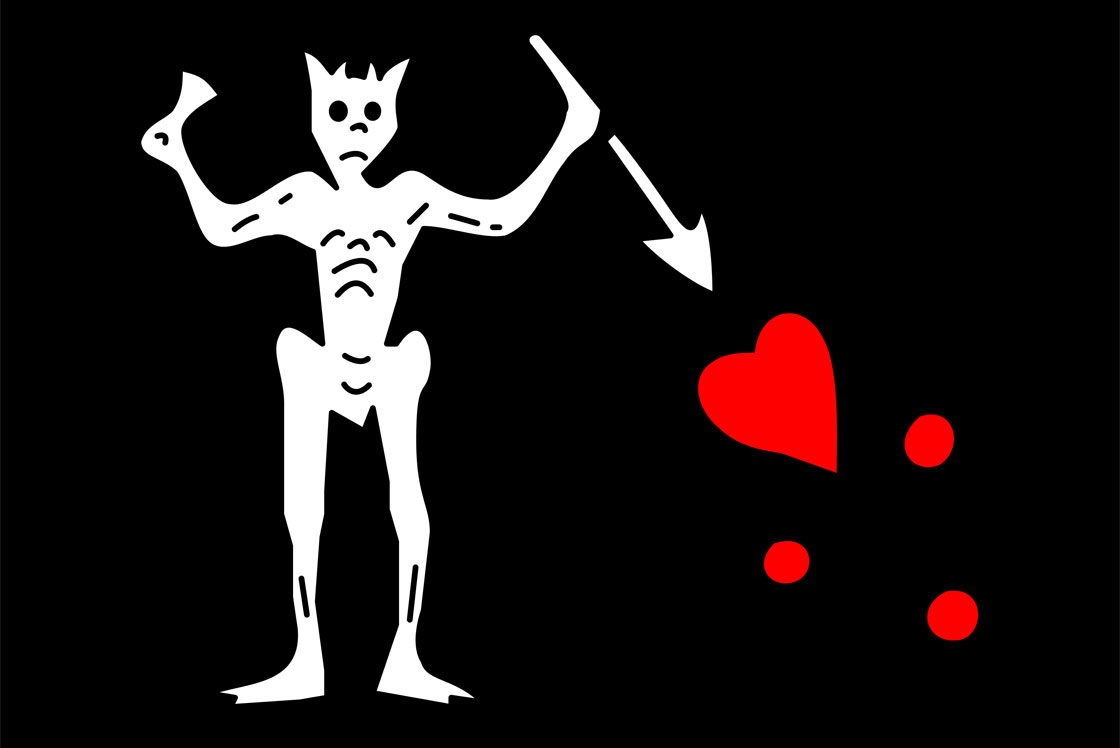The Southern Outer Banks, particularly Ocracoke Island, is notorious as the stomping grounds for some of history's most infamous pirates. Notable swashbucklers from Calico Jack to Anne Bonney and Mary Reed, arguably the most famous women pirates, have made a splash in this area, robbing privateers blind and making intricate, sneaky escapes in the inlets and soundside waters off of these barrier islands.
The reason why Ocracoke Island in particular was so attractive to pirates is the same reason why it's attractive to modern Outer Banks vacationers: location, location, location.
During the late 1600s and well into the 1700s and beyond, Ocracoke and neighboring Portsmouth Island were two of North Carolina's biggest ports. With deep inlets and access to river channels to mainland North Carolina, many of the area's goods arrived and departed from the Portsmouth and Ocracoke harbors.
Added to this was the fact that these particular barrier islands had ample hiding places. Consider the cluster of small islands that border both the ocean and soundsides of Ocracoke Island, protected and hidden by the tall oceanside dunes. These navigable channels allowed pirate ships to stalk their victims without notice and make quick getaways after an attack.
So a combination of access and quantity of goods attracted pirates from the West Indies to Boston to tiny Ocracoke Island, and their tenure of destruction was well documented and seemed to spiral out of control, until the government stepped in and sent privateers to put an end to North Carolina piracy.
The campaign to put an end to piracy was a long and tumultuous one, but it was greatly helped by the successful trapping and execution of the region's most notorious pirate, Blackbeard.
Blackbeard is one of history's most legendary pirates of all time, and the coast of North Carolina, from Ocracoke Island to the small inland town of Bath, has the rare distinction of being his favorite plundering grounds, his favorite hideout, and his home.
Blackbeard was born Edward Teach and came to America from Bristol, England. Teach started his life at sea as a privateer during the Queen Anne's War, where he was authorized by the British Government to attack and plunder enemy merchant ships. The spoils were then divided by the government and the captain of the attacking ship. After a long and successful run as a privateer, the war ended in 1714, and Teach realized his source of income was over. As a result, and like a handful of others who were former privateers, he turned to piracy.
For several years, Teach served as a crewmember on a pirate ship until 1717, when he commandeered a ship for himself and recruited a crew. He renamed the ship the "Queen Anne's Revenge" and began to plunder a number of ships off the Virginia and Carolina coastlines. His most notorious expedition occurred in Charleston, South Carolina, where he captured several prominent citizens and held them hostage until the city agreed to pay him in medical supplies for their safe return. This incident put Edward Teach on the map as one of the region's most dangerous and fearless pirates.
During this time, he also developed the name "Blackbeard" as a nod to his appearance and his notoriety as a cruel and violent pirate. A big believer in first impressions, upon approaching his prey, Blackbeard would dress all in black and twist his long wild beard into wisps secured with ribbons. Then he would stick long lighted matches under his hat and around his face, giving him a ghostly appearance that illuminated his wild eyes, and which many victims referred to as the face of the devil. This was an effective means of terror, as many ships would quickly surrender rather than fight this demon captain.
When he wasn't at sea, Blackbeard would often return to the coastal and inland communities of North Carolina. As aforementioned, the shallow waters of the Pamlico Sound which separates the Outer Banks and Ocracoke Island from the Atlantic provided a perfect hiding spot. As a result, Blackbeard spent a lot of time close to Ocracoke Island, his favorite hideout. In fact, there is still an inlet on Ocracoke Island today called "Teach's Hole," named in his honor.
Besides having the cover and protection of the barrier islands along the coast, North Carolina in particular attracted pirates because of its less than strict government policy on piracy. The state governor during the Golden Age of Piracy, Charles Eden, was widely thought to simply ignore the activities of pirates along the coast, in exchange for an under the table share of the spoils. In fact, during the summer of 1718, when Blackbeard lived in the town of Bath, it was rumored that he socialized regularly with the governor himself, who was also his neighbor.
Blackbeard apparently loved his life in Bath, but after a few months of living on shore, he would inevitably return to pirating to finance his lavish lifestyle. Meanwhile, the citizens of North Carolina who were tired of the hold that pirates had on their coast, turned to the governor of neighboring Virginia, Alexander Spotswood, for help.
Spotswood was far less tolerant of pirates, and commissioned a crew of Naval Officers, captained by Lt. Robert Maynard, to travel down to Ocracoke Island to find and capture Blackbeard.
They did indeed find him just off the waters of Ocracoke, and at dawn on November 22nd, 1718, a fierce battle broke out between Blackbeard and Lt. Maynard. So embedded is Blackbeard in Ocracoke folklore, that is a popular wives tale that Ocracoke got its name because Blackbeard, impatient for the sun to rise and fight to begin, started shouting "O Crow, Cock!" in an effort to coax the roosters to start crowing and signal the beginning of the day.
After suffering 25 wounds, including 5 gunshot wounds, Blackbeard was killed and his crew was defeated. As proof of the defeat and the end of Blackbeard's reign, Maynard cut off his head and hung it from the bow of his ship as he sailed home.
Blackbeard's pirating career was brief, and lasted just a couple short years, but his legacy is unmistakable. The world's most infamous pirate is considered one of North Carolina's historical treasures, as it was along the Outer Banks that Blackbeard lived, plundered, and eventually met his end.
-
OBX Wedding Fest
January 16th, 2026 - January 18th, 2026 -
Hatteras Island Oyster Roast
February 7th, 2026 1:00 PM - 4:00 PM -
First Friday in Manteo
March 6th, 2026 6:00 PM - 8:00 PM
Wild Horse Adventure Tours has been voted the #1 tour company in the USA by TripAdvisor. Feel the ocean breeze and taste the salty beach air as you cruise the Outer Banks beaches in our exclusive OPEN AIR, 13-passenger Hummers with one of...


